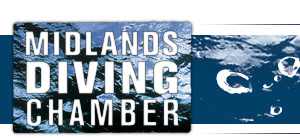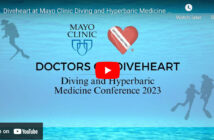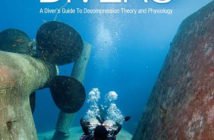When you feel unwell or have any symptoms after a dive it is essential to remember that the symptoms or signs are pressure-related until proven otherwise, usually, by a diagnostic or therapeutic recompression. Therefore, the doctors will ask you about pressure exposure as an aid to the diagnosis. The following specifics about the dive will be required or elicited:
- Where was the dive location (e.g. ocean, lake, river, quarry or cave)? some dive holidays or dive boats will provide dives continuously over seven days or more. This may be important information.
- When did you first have any symptoms? Did you have any symptoms after earlier dives?
- What was the rate of ascent and the depth that you dived to?
- What were the approximate times spent at specific depths?
- What work did you do during the dive (consider currents, distance swam, water temperature, and primary activity [e.g. wreck diving, recovery])?
- What gases did you use (compressed air, rebreathing equipment, mixed gases)?
- What was your physical condition before, during and after the dive (e.g. fatigue, alcohol intake, fever, vertigo, nausea, overexertion, pulled muscles)?
- Was first aid delivered (e.g. oxygen, positioning, medications, fluids)?
You will be asked about the following symptoms:
- General symptoms of profound fatigue or heaviness, weakness, sweating, or malaise.
- Musculoskeletal symptoms of joint pain, tendonitis, back pain, or heaviness of extremities
- Mental status symptoms of confusion, unconsciousness, changes in personality
- Eye and ear symptoms of loss of vision in a particular area, double vision, tunnel vision, blurring, tinnitus, or partial hearing loss
- Skin symptoms of itching or mottling
- Lung symptoms of shortness of breath, non-productive cough, or blood in your sputum
- Cardiac symptoms of inspiratory, substernal, or sharp or burning chest pain
- Gastrointestinal symptoms of abdominal pain, faecal incontinence, nausea, or vomiting
- Genitourinary symptoms of urinary incontinence or urinary retention
- Neurological symptoms of loss of sensation (general or over a joint), paresis, paralysis, migrainous headache, vertigo, abnormal verbalisation, or unsteady gait
- Lymphatic symptoms of swollen lower limbs
PHYSICAL
Physical exam findings will include the following:
- General – fatigue, shock
- Mental status – disorientation, mental dullness
- Eyes – visual field deficit, pupillary changes, air bubbles in the retinal vessels, or nystagmus
- Mouth – Liebermeister’s sign (a sharply defined area of pallor in the tongue)
- Pulmonary – rapid respiratory rate, respiratory failure, respiratory distress, or haemoptysis (coughing up blood in the sputum)
- Cardiac – rapid heart beat, low blood pressure, abnormal cardiac rhythms, or Hamman’s sign (crackling sound heard over the heart during ventricular contraction)
- Gastrointestinal – vomiting
- Genitourinary – urinary bladder distension, decreased urinary output
- Neurological – loss of sensation, loss of power, anal sphincter weakness, fitting, or poor co-ordination and wobbly gait, especially on heel to toe walking.
- Musculoskeletal – subjective joint pain without objective findings, or decreased range of motion (ROM) due to muscle splinting of involved joint or tendon
- Lymphatic – lymphoedema where there is swelling of the tissues due to the blocking of the lymphatic system.
- Skin – itching, mottling/marbling, violet colour, cyanosis, or pallor
- Diagnostic techniques – Pain, frequently musculoskeletal, is present in a substantial number of DCI cases. In one series 57.8% two specific techniques that can aid the practitioner in diagnosing DCI are:
- Placing a large BP cuff over the area of pain and inflating it to 150-250 mm Hg. In the patient with nitrogen bubbling in the joint or tendons, this increase can force some of the nitrogen back into solution, resulting in a temporary decrease in pain.
- Milking the muscle toward the affected joint may increase pain by pushing more nitrogen bubbles toward the joint.
Differentiating between AGE and DCI
- AGE – (1) Any type of dive can cause AGE, (2) onset is immediate (< 10 – 20 min), and (3) neurological deficits primarily manifest in brain but may affect only the spinal cord.
- DCI – (1) Dive must be of sufficient duration to create a gas load in, but not necessarily saturate tissues, (2) onset is latent (0-36 h), and (3) neurological deficits manifest in spinal cord and brain.









